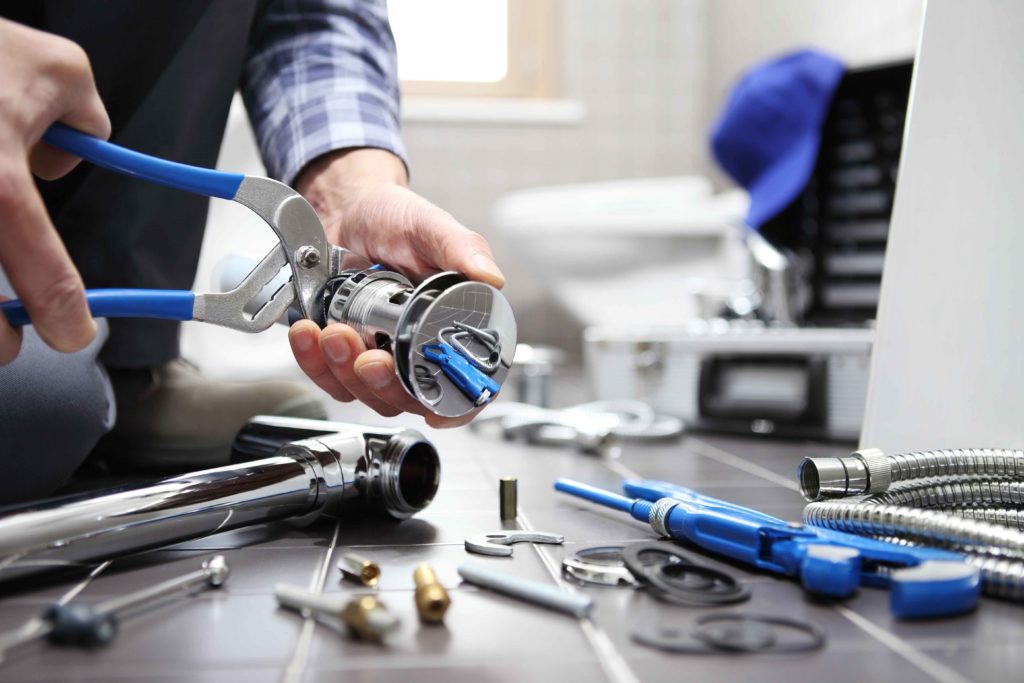Which It's Critical to Resolve a Broken Faucet
Which It's Critical to Resolve a Broken Faucet
Blog Article
They are making several good pointers regarding Should I Repair or Replace a Leaky Faucet? in general in the content further down.

Trickling faucets could feel like a small aggravation, yet their influence surpasses just the inconvenience of the audio. From drainage to incurring unnecessary financial expenses and health and wellness threats, ignoring a trickling tap can cause different consequences. In this post, we'll explore why it's vital to address this usual family concern immediately and properly.
Wastage of Water
Environmental Impact
Trickling faucets contribute significantly to water wastage. According to the Environmental Protection Agency (EPA), a single faucet leaking at one drip per secondly can waste more than 3,000 gallons of water per year. This not only pressures water resources yet also influences environments and wild animals depending on them.
Financial Expenses
Increased Water Costs
Beyond the ecological impact, leaking taps can pump up water bills significantly. The gathered wastefulness in time translates into greater energy expenses, which might have been avoided with timely repairs.
Potential Home Damages
Furthermore, extended dripping can lead to damage to fixtures and surface areas bordering the tap. Water build-up can trigger staining, rust, and even architectural issues if left neglected, leading to added repair work expenses.
Health and wellness Issues
Mold And Mildew and Mildew Growth
The continuous visibility of moisture from a leaking faucet creates a suitable environment for mold and mildew and mildew growth. These fungis not only jeopardize interior air top quality however also posture health and wellness threats, specifically for individuals with respiratory conditions or allergic reactions.
Waterborne Illness
Stagnant water in trickling faucets can become a breeding place for bacteria and various other microorganisms, enhancing the threat of waterborne illness. Contaminants such as Legionella bacteria prosper in stagnant water, possibly bring about severe health problems when ingested or inhaled.
DIY vs. Expert Repair work
Benefits and drawbacks of DIY Repair Service
While some might attempt to deal with a trickling faucet themselves, DIY repair work come with their own collection of difficulties. Without proper understanding and devices, DIY attempts can aggravate the issue or result in insufficient repair work, extending the trouble.
Benefits of Hiring a Specialist Plumber
Employing a specialist plumber makes sure that the underlying cause of the leaking tap is addressed efficiently. Plumbings possess the proficiency and devices to diagnose and fix faucet issues successfully, saving time and lessening the danger of additional damage.
Step-by-Step Overview to Fixing a Dripping Tap
Tools Required
Prior to attempting to deal with a dripping faucet, gather the necessary devices, consisting of a flexible wrench, screwdrivers, substitute components (such as washing machines or cartridges), and plumber's tape.
Typical Tap Issues and Their Solutions
Determine the kind of tap and the particular problem triggering the drip. Typical troubles consist of damaged washers, corroded valve seats, or defective O-rings. Describe manufacturer guidelines or online tutorials for detailed advice on fixings.
Preventive Measures
Regular Maintenance Tips
To prevent dripping faucets, carry out routine upkeep such as cleaning aerators, inspecting for leaks, and changing worn-out parts promptly. Furthermore, think about mounting water-saving gadgets or updating to more effective components.
Significance of Prompt Repairs
Attending to dripping faucets as quickly as they're observed prevents more water wastefulness and potential damage, eventually saving both water and cash in the future.
Effect On Residential Property Value
Perception of Well-Maintained Property
Keeping a building in good condition, including addressing upkeep problems like dripping taps, enhances its regarded value and worth among potential buyers or tenants.
Influence on Resale Value
Qualities with well-maintained plumbing fixtures, including faucets, command greater resale values in the property market. Attending to dripping taps can add to a positive impact throughout residential or commercial property examinations and settlements.
Ecological Responsibility
Specific Contribution to Conservation
Taking responsibility for repairing dripping faucets lines up with broader efforts towards water conservation and ecological sustainability. Every individual's activities collectively make a significant effect on maintaining priceless resources.
Sustainable Living Practices
By focusing on prompt repair work and taking on water-saving behaviors, individuals contribute to lasting living techniques that profit both present and future generations.
Conclusion
Attending to a trickling tap surpasses plain benefit; it's a crucial action towards saving water, reducing economic expenses, and protecting wellness and home. Whether with do it yourself fixings or expert assistance, acting to take care of leaking taps is a little yet impactful way to promote liable stewardship of resources and add to a much healthier, extra lasting future.
How to Fix a Leaky Faucet: Step-by-Step Repair Guide
A leaky faucet may seem like a simple annoyance, but if it's not fixed promptly, that leak could cost hundreds to potentially thousands. From water damage to mold, mildew, and high water bills, even a tiny leak can be catastrophic if left unattended. Damage like this can even affect the overall value of your home, so it's important to take the right approach for leaky faucet repair. You may need the help of a plumber in some cases, but we've got a few tips you can try on how to fix a leaky faucet before calling the pros.
Four Faucet Types
When you're learning how to fix a leaky faucet, the first step is knowing what kind of faucet you're working with! There are four common types.
Cartridge Faucets
Cartridge faucets come in one- or two-handled varieties. In one-handled cartridge faucets, hot and cold water combines in a single cartridge. In the two-handled versions, hot and cold water are controlled separately and mixed in the faucet.
Ball Faucets
Ball faucets have a single lever you push up and down to adjust the pressure and rotate to change the temperature. A slotted metal ball controls the amount of water allowed into the spout.
Compression Washer Faucets
They're the oldest type of faucet, but they're still used in many homes — especially older ones. Compression faucets have two separate handles that, when turned, raise or lower the washer that seals a water valve. This valve stops water from flowing through the faucet when it is turned off.
Disc Faucets
Disc faucets rarely need to be repaired due to their maintenance-free design. The water flow is controlled by two discs — the upper one raises and lowers against a fixed lower disc, creating a watertight seal. If your disc faucet starts leaking, you may need to replace the seals or clean residue buildup from the inlets.
Fixing a Leaky Faucet
Step 1: Turn Off the Water
Whether you're learning how to fix a leaky bathtub faucet or how to fix a leaky kitchen faucet, always turn off the water supply to your working area when you're fixing a leak. The last thing you want is a flood added to your list of things to fix.
Look for the shutoff valves below your sink or around the tub and turn them clockwise to stop the water flow. If your faucet doesn't have shutoff valves, you may need to turn off the water for the whole house. Check to make sure it's off by turning the faucet on. If nothing comes out, you're ready to start the repair.
Step 2: Take Apart the Faucet
How you disassemble your faucet depends on the type of fixture you have. You can use a flathead screwdriver to remove the caps on top of the handle or handles for cartridge and compression faucets. Inside, you should see handle screws. Unscrew these with a screwdriver to remove the handle.
Disc- and ball-style faucets will typically have an inlet screw near the handle, and removing that will reveal the interior of the faucet.
Detach the Valve Stem
For cartridge- and compression-style faucets, you'll see the inner valve stem or cartridge once you remove the faucet handles. If you have a compression faucet, unscrew the brass valve stem. If you have a cartridge faucet, pull out the cartridge. If your cartridge has been in place for a while, it may require some tools or extra force to remove it due to mineral deposits.
Examine and Replace Parts
Once you've removed the parts, check them out to confirm what needs to be replaced. You may see corroded rubber washers, O-rings, stems, or cartridges. On a ball-style faucet, check the seats and springs for damage.
If you need to repair a leaky disc faucet, check the inlet and seals on the lower disc.
Once you determine what parts must be replaced, visit your local hardware store. Bring the damaged parts with you to ensure you can purchase the correct components to replace them.
Clean Valves and Faucet Cavity
If you've removed a stem or cartridge, you may notice mineral buildup in the faucet's threads. Use white vinegar to clean the valve seat by soaking it for a few minutes, then scrub it away with a soft toothbrush and rinse with warm water. You can also clean the interior of the faucet in the same way.
Reassemble the Faucet
Once your faucet is cleaned and the required parts have been replaced, it's time to reassemble it. Put the pieces back together and slowly turn the water supply back on. Doing this slowly is crucial because too much initial water pressure can damage the new hardware you've just installed.
https://homewarranty.firstam.com/blog/how-to-fix-leaky-faucet

I recently found that blog posting on 4 Common Reasons for a Leaky Faucet when scouting around the web. Appreciated our piece? Please share it. Help others check it out. I praise you for your time. Return soon.
Report this page